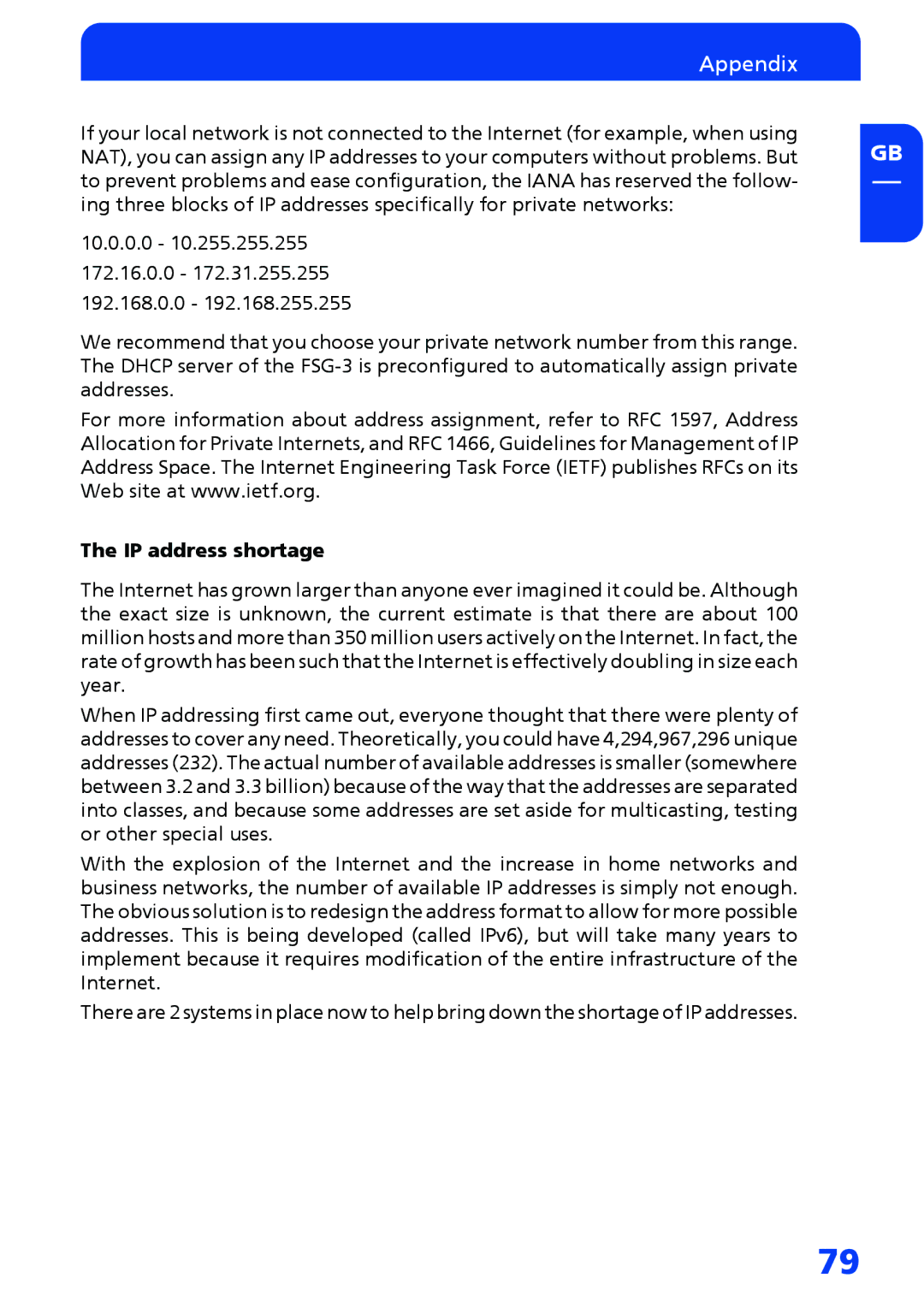
Appendix
If your local network is not connected to the Internet (for example, when using
NAT), you can assign any IP addresses to your computers without problems. But GB to prevent problems and ease configuration, the IANA has reserved the follow-
ing three blocks of IP addresses specifically for private networks:
10.0.0.0- 10.255.255.255
172.16.0.0- 172.31.255.255
192.168.0.0 - 192.168.255.255
We recommend that you choose your private network number from this range. The DHCP server of the
For more information about address assignment, refer to RFC 1597, Address Allocation for Private Internets, and RFC 1466, Guidelines for Management of IP Address Space. The Internet Engineering Task Force (IETF) publishes RFCs on its Web site at www.ietf.org.
The IP address shortage
The Internet has grown larger than anyone ever imagined it could be. Although the exact size is unknown, the current estimate is that there are about 100 million hosts and more than 350 million users actively on the Internet. In fact, the rate of growth has been such that the Internet is effectively doubling in size each year.
When IP addressing first came out, everyone thought that there were plenty of addresses to cover any need. Theoretically, you could have 4,294,967,296 unique addresses (232). The actual number of available addresses is smaller (somewhere between 3.2 and 3.3 billion) because of the way that the addresses are separated into classes, and because some addresses are set aside for multicasting, testing or other special uses.
With the explosion of the Internet and the increase in home networks and business networks, the number of available IP addresses is simply not enough. The obvious solution is to redesign the address format to allow for more possible addresses. This is being developed (called IPv6), but will take many years to implement because it requires modification of the entire infrastructure of the Internet.
There are 2 systems in place now to help bring down the shortage of IP addresses.
79
